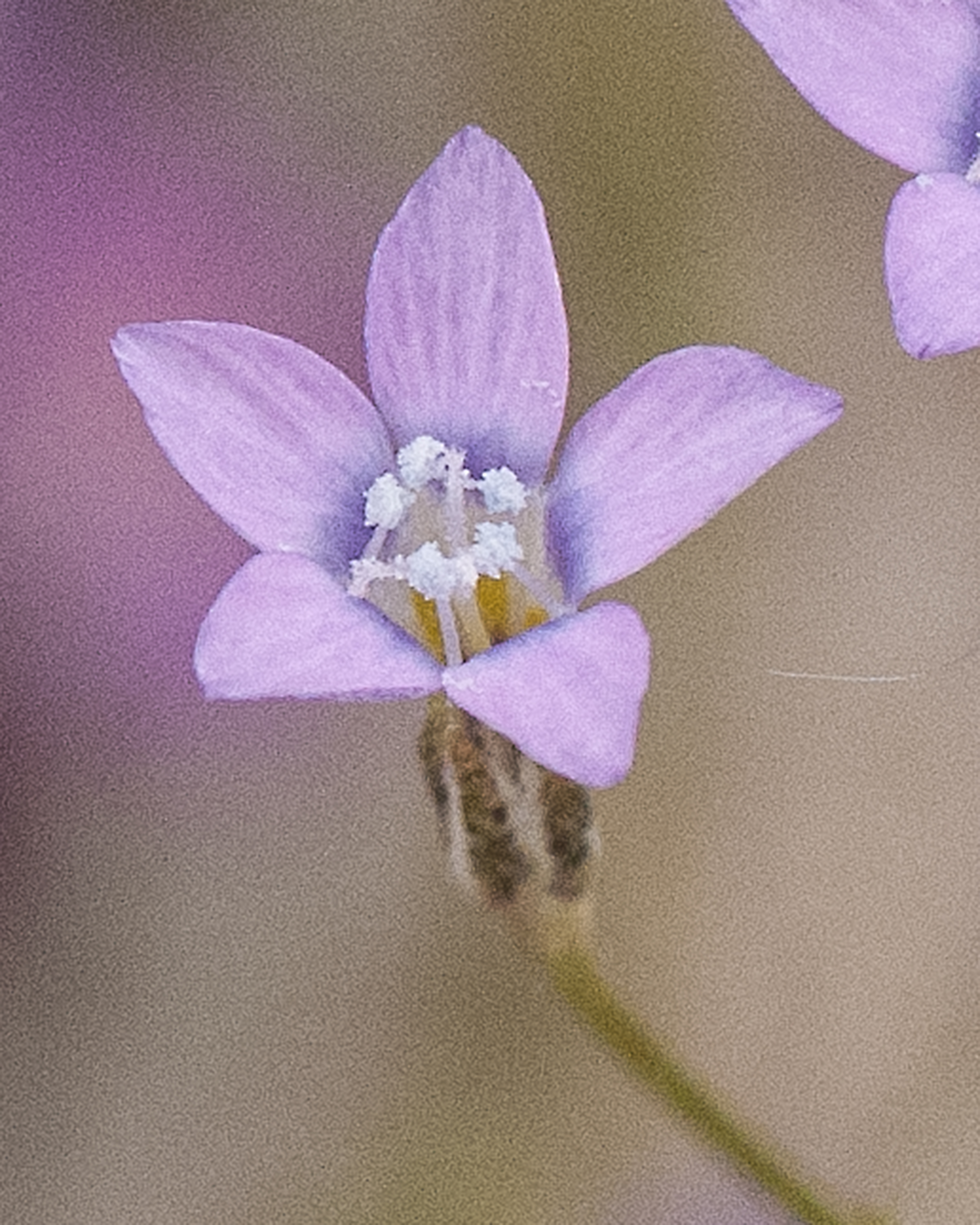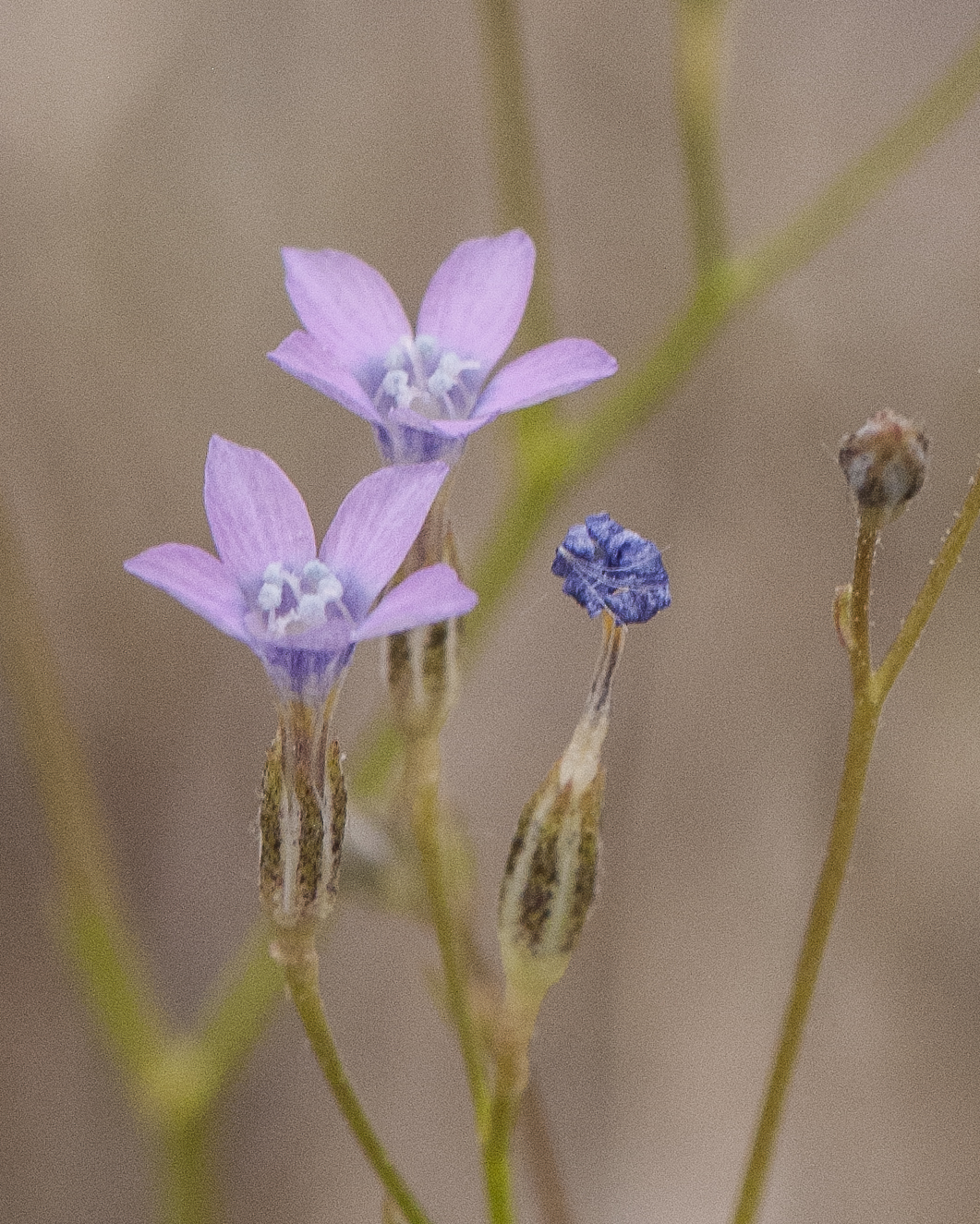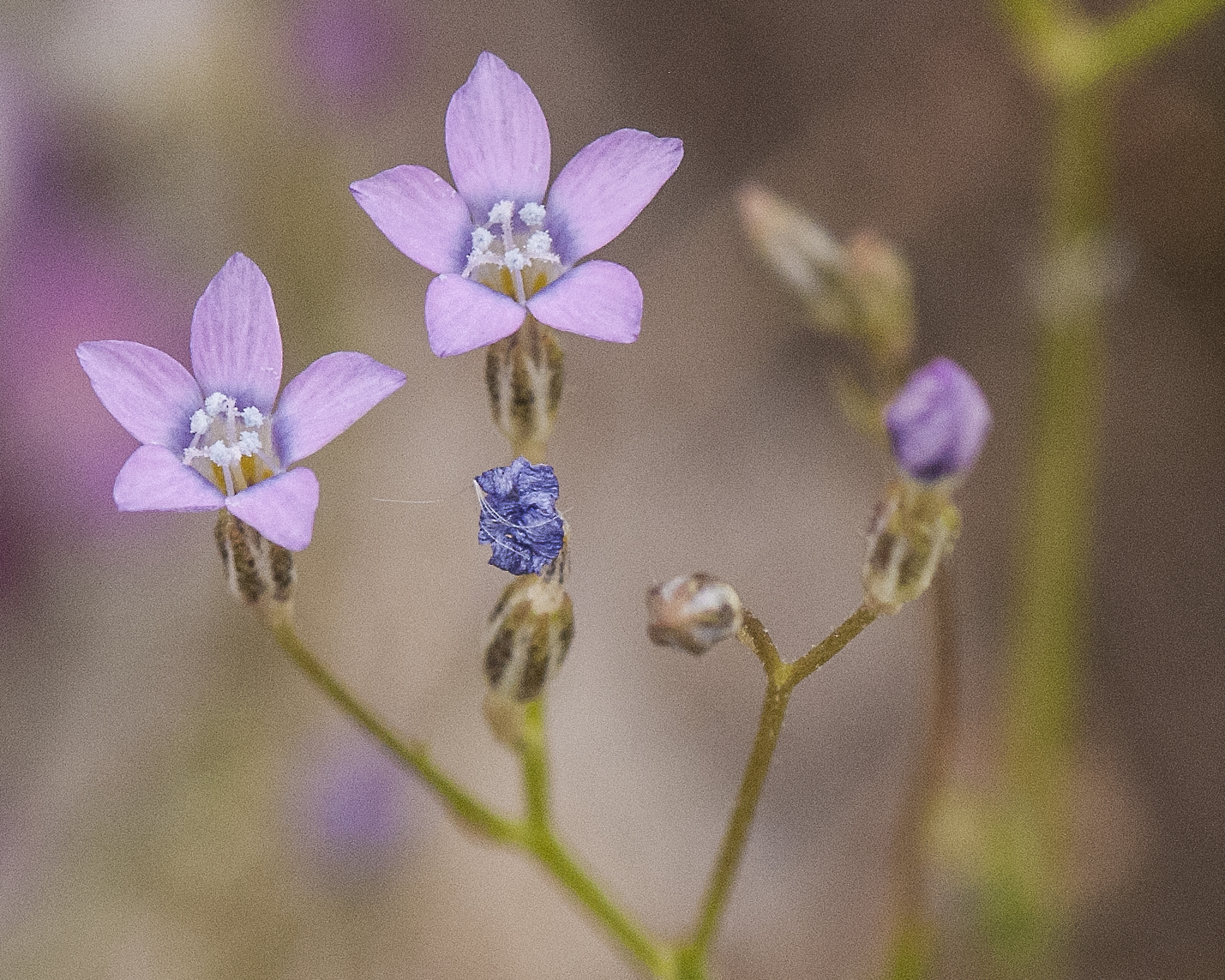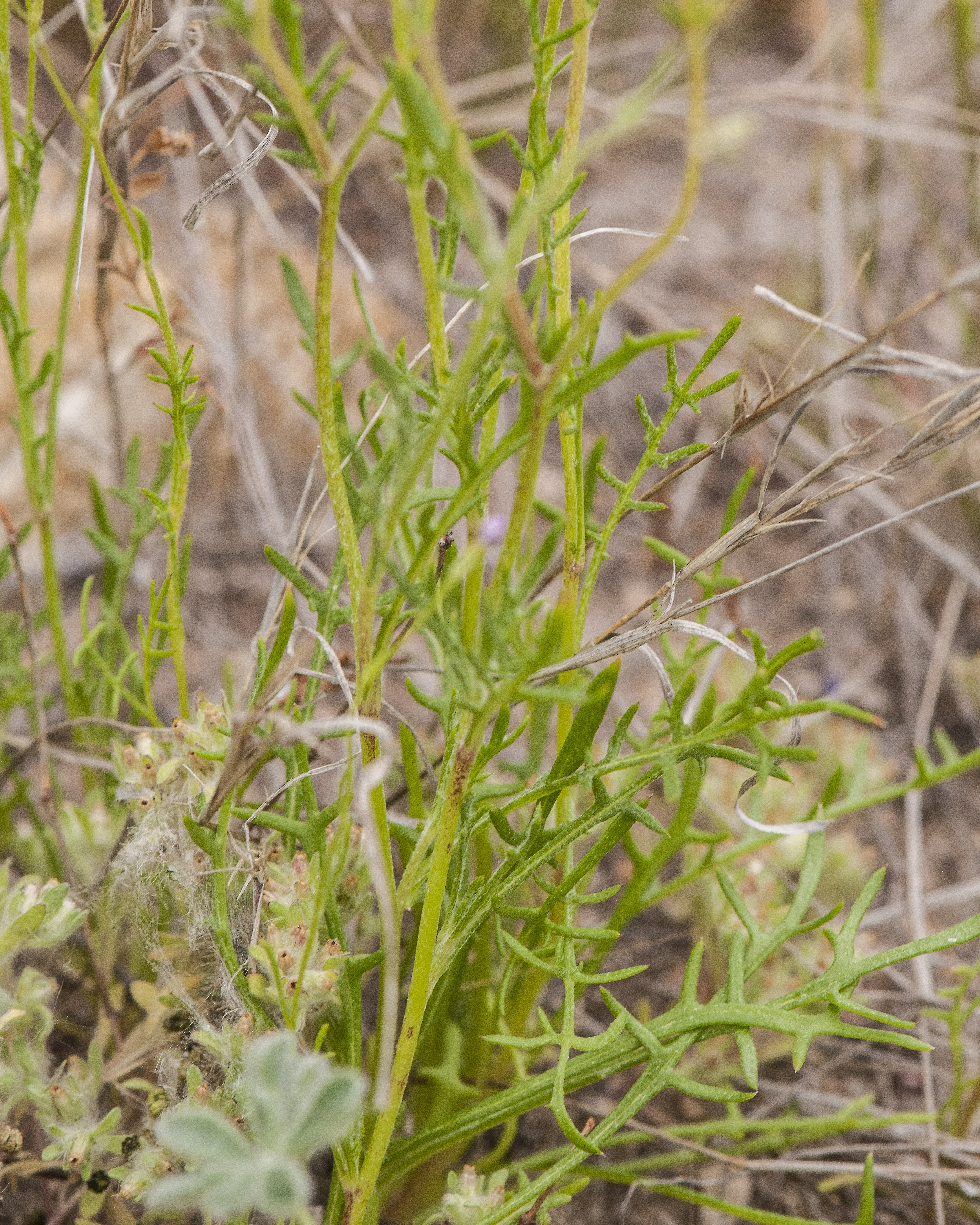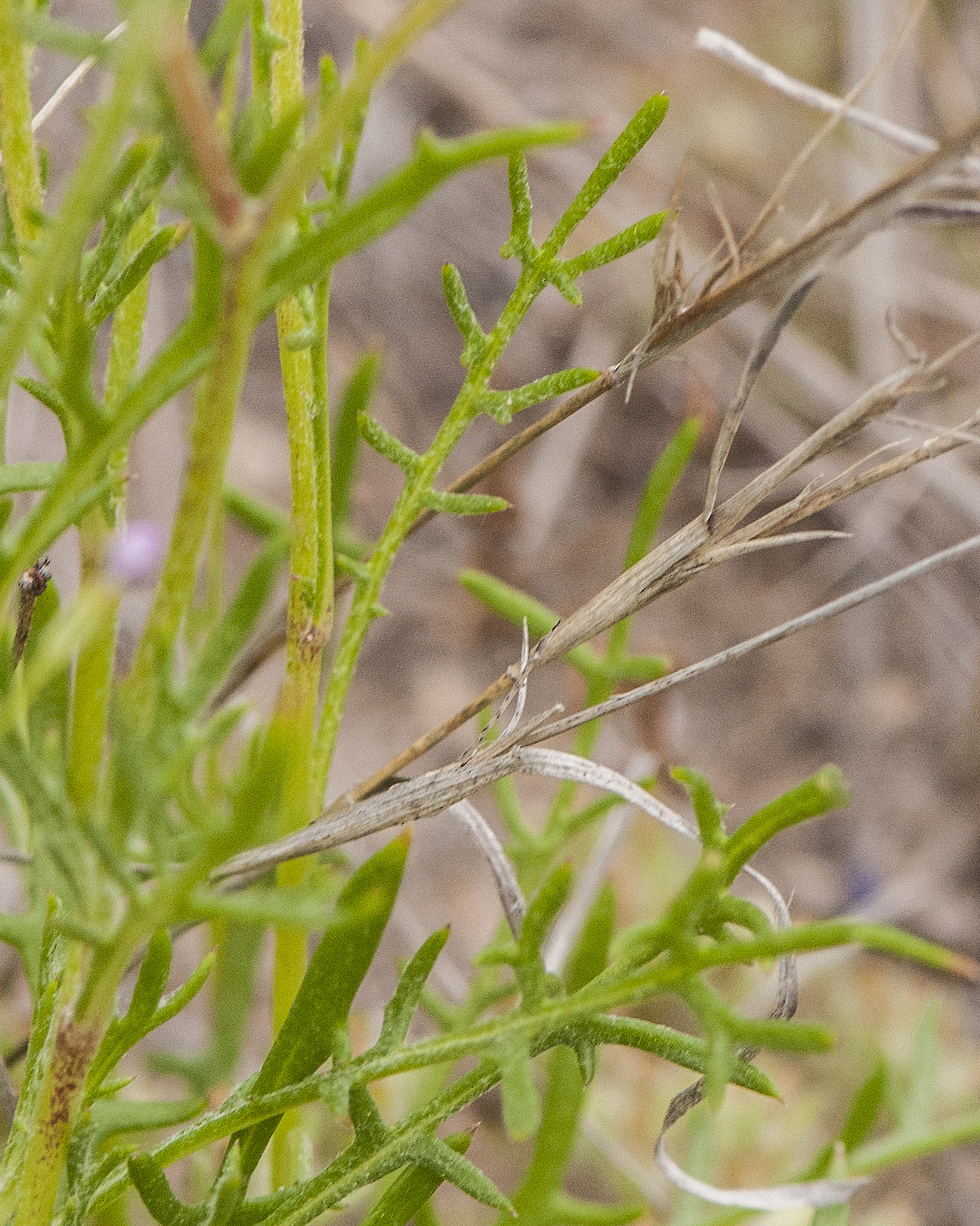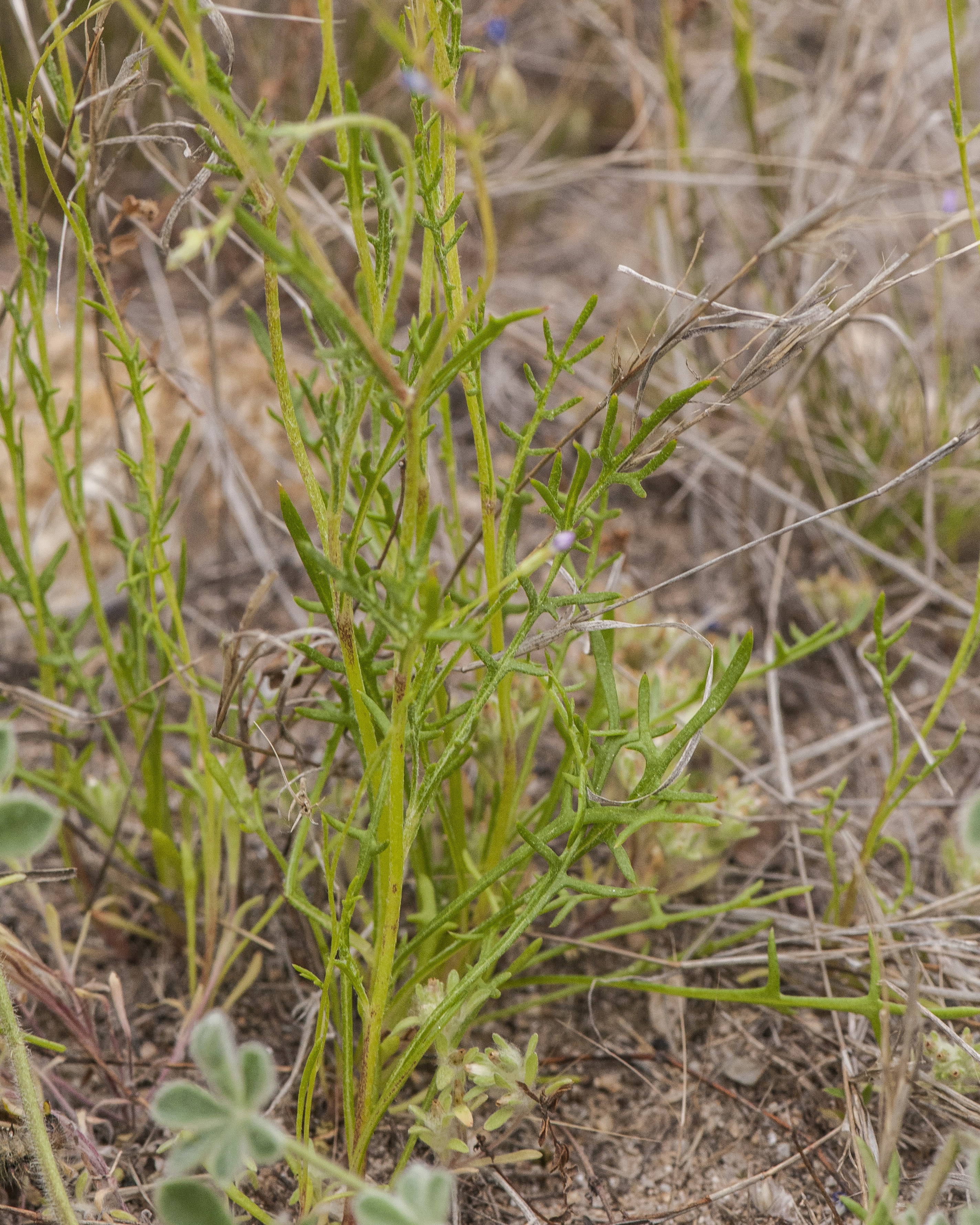Wildflowers of Southern Arizona
Lesser Yellowthroat Gilia.
Gilia flavocincta ssp australis .
Phlox (Polemoniaceae) family.
Duration: Annual. Nativity: Native. Lifeform: Forb/Herb. General: Annual herbs, 6-30 cm tall; stems erect and branched throughout; herbage cobwebby below and glabrous to sparsely stipitate glandular above. Leaves: Basal rosette plus a few reduced, alternate stem leaves, all sparsely cobwebby; basal and lower stem leaves lobed once or twice, the lobes entire or toothed; upper stem leaves entire or basally lobed. Flowers: Pink-purple and yellow, short-pediceled or subsessile in compact terminal clusters, the clusters on long stalks; calyx 3-5 mm long, glabrous to sparsely cobwebby, consisting of 5 herbaceous sepals connected to each other by papery membranes, the sepals with acuminate to attenuate tips; corolla funnelform, 7-27 mm long, the tube equal to or longer than the calyx and violet or yellow, the throat yellow, the lobes pink to yellow with violet flecks; anthers slightly exserted beyond the corolla lobes. Fruits: Capsule 5-9 mm long, broadly ovoid; containing several seeds. Ecology: Found in sandy canyons, on mountain slopes and along arroyos, from 1,500-5,000 ft (457-1524 m); flowers February-May. Distribution: UT, AZ, NM; south to n MEX. Notes: Distinguished by sparse cobwebby hairs on leaves which are mostly basal, and reduced above; flowers subsessile or short-pedicelled (some pedicelled) in terminal corymbose or capitate clusters (some in open inflorecsences); calyces not glandular, and streaked or spotted with purple, especially on the papery sinuses between the calyx lobes; and funnelform corollas. It is similar to G. mexicana, but that species has generally smaller leaves that are dissected into very narrow lobes (less than 1 mm wide) with pointed tips; lacks the purple spots on the papery sinuses between the calyx lobes; and has smaller flowers, the corollas only 5-8 mm long (7-27 mm long in G. flavocincta). There are two subspecies: subsp. australis can be told apart by having a corolla 7-18 mm long, the tube equal to or slightly exceeding the calyx, the style usually not exceeding the stamens, and usually found at slightly lower elevations; subsp. flavocincta has a corolla 12-27 mm long, the tube longer than the calyx, with the style usually exceeding the stamens. Etymology: Gilia is named for Filippo Luigi Gilii (1756-1821) an Italian naturalist; flavocincta comes from the Latin flavus, yellow, and cincta, surrounded or encircled, referring to the yellow throat of the flower.
Santa Catalina Mountains.
Sabino Canyon Recreation Area
Location: Bear Canyon Tram Stop 2.
3/8/19
Notes: iNaturalist reviewed the photos and contributed G. flavocincta ssp australis as the species. (Reviewed by Polemoniaceae)
See SEINet Pictures and Description


